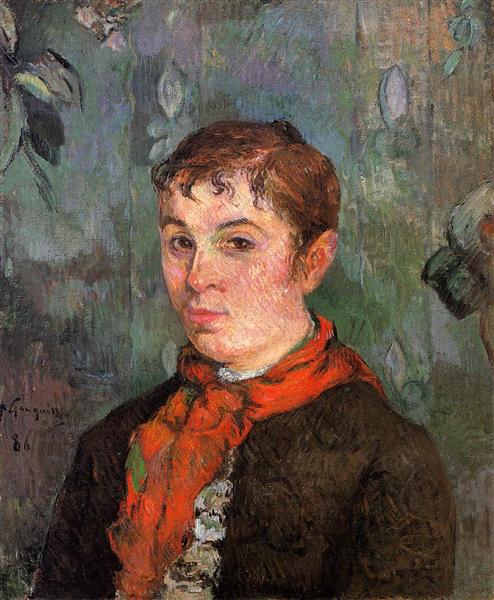Beskrivelse
Paul Gauguin's The Chief's Daughter, painted in 1886, is a fascinating depiction that encapsulates the essence of Symbolism and Post-Impressionism, two movements that the artist helped define. Part of Gauguin's period of exploring the culture and landscapes of Brittany, this painting reveals his interest in exotic subject matter and the social realities of the communities he portrayed.
The canvas depicts a young woman with an introspective expression, sitting against a background that appears to be a deeply colorful natural environment. The color palette used by Gauguin in this work is vibrant, with deep greens and earthy tones predominating, which qualify the environment while also enhancing the central figure. The application of color is bold and direct, using brushstrokes that feel almost flat in their instantaneousness, which is characteristic of Gauguin's style. Through his use of color, the artist not only depicts visual reality, but also establishes an emotional state in the work.
The figure of the chief’s daughter, at the centre of the composition, is wearing traditional clothing that speaks to her cultural identity. This portrait is not just a representation of an individual, but evokes a notion of dignity and the traditional life that surrounds this figure. The young woman’s penetrating gaze, which seems to challenge the viewer, generates an intimate connection. At the same time, it creates an aura of mystery, as if her presence is laden with untold stories. This psychological approach in portraits is a hallmark of Gauguin, who often sought to go beyond the mere surface to capture the human essence.
The arrangement of the composition also reflects an influence of oriental aesthetics, with planes of colour that seem to diagram a space that is more symbolic than realistic. This aspect is noticeable in the use of strong contours and simplified forms that dominate the image, reinforcing the decorative character of the work. The lack of traditional three-dimensional perspective, in favour of a flatter and more abstract expression, invites viewers to become more emotionally involved with the work.
Although The Chief's Daughter is not as widely discussed as Gauguin's other masterpieces, it serves as a bridge between his earlier, Impressionist-influenced work and his later exploration of symbolism and spirituality in indigenous cultures, particularly notable in his Tahitian works. It is interesting to note that Gauguin, having had a varied career in commerce and banking before turning fully to art, was always a seeker of truth in his depictions, seeking not only beauty but also a sense of cultural authenticity in his portraits.
In conclusion, “The Chief’s Daughter” is a brilliant example of how Gauguin managed to combine color, form and symbolism to create a work that transcends mere portraiture. It captures not only the beauty of its subject, but also the depth of her culture, offering the viewer an invitation to explore the hidden truths of a life that, although distant in time and space, still resonates in the contemporary world of modern art. Its ability to evoke emotion through shapes and colors makes this piece a lasting testament to Gauguin’s genius and his continuing legacy in the art world.
KUADROS ©, a famous painting on your wall.
Hand-made oil painting reproductions, with the quality of professional artists and the distinctive seal of KUADROS ©.
Painting reproduction service with satisfaction guarantee. If you are not completely satisfied with the replica of your painting, we will refund 100% of your money.

